Is A Beautiful Mind An Accurate Portrayal Of Schizophrenia?
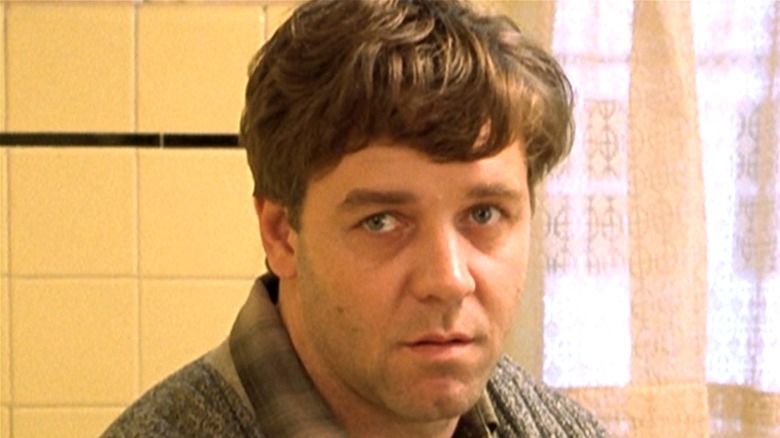
Attempting to show the struggles of any particular illness on film always involves sensitive elements that need to be handled with care: Be too blasé with the issue, and it may soften the severe battle for those that suffer from it. On the other hand, if you over-embellish certain elements, it can almost skew the common understanding of an illness and stigmatize it for those that deal with it every day. This was the tightrope that Ron Howard and his cast had to walk along when it came to the 2005 film, "A Beautiful Mind." Nominated for eight Academy Awards (via IMDB ) and winning half of them including, Best Picture, Best Director, Best Adapted Screenplay, and Best Supporting Actress going to Jennifer Connelly , the film told the true story of Nobel Prize-winning mathematician, John Nash, who was diagnosed with schizophrenia.
Russell Crowe took on the demanding and delicate role of Nash, that earned him an Oscar nomination. As impressive as it was, though, just how solid was this portrayal of a man struggling to differentiate reality from his own mental projections? As it turns out, a few elements of Nash's story deviated from the truth in Howard's film. Not because of poor research or consideration, but the medium in which it was displayed.

A decades worth of errors
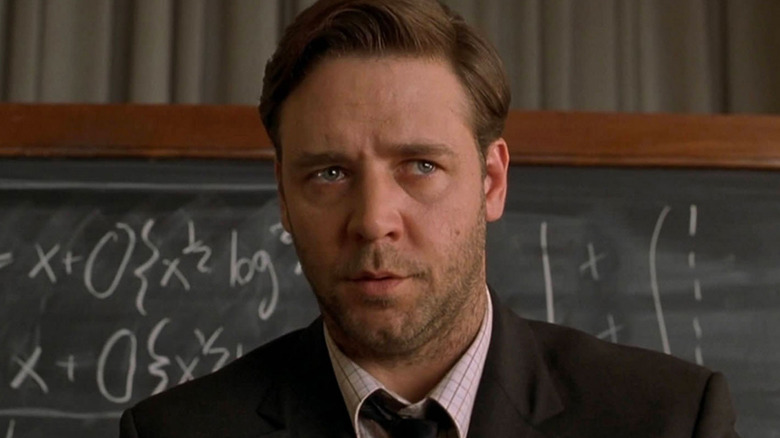
The 2005 film that told Nash's story, "A Beautiful Mind," sees the mathematician enroll at Princeton University in his early 20s and already showing signs of mental health issues. Awkward around other people and emotionally detached in conversations, Nash shows key signs of someone with this condition, which may be accurate scientifically ... but not necessarily historically, when it comes to Nash himself.
According to the National Alliance on Mental Illness (NAMI) , the average age for men showing signs of schizophrenia is in their late teens to early 20s. This would make sense with Nash enduring some of the various uncomfortable situations he finds himself during his time at Princeton, unintentionally belittling his classmates for basic ideas and making jokes that don't quite land. However, Nash wasn't diagnosed until the 1950s, when he was in his early 30s. While Crowe's portrayal in certain environments is correct, it does present issues that may not surfaced for another ten years in Nash's specific case, but which make sense to display on film as a way of indicating his condition.
John's hallucinations shouldn't be seen
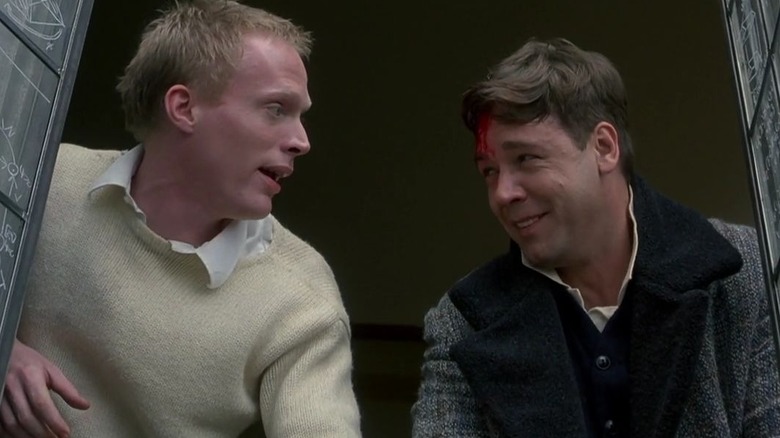
Through the tumultuous period of Nash discovering his genius and the condition that impedes him, he meets his good friend and college roommate Charles Herman ( Paul Bettany ). An English student who is fond of parties, women, hangovers and is eventually revealed to be one of Nash's earlier hallucinations. From there, various other characters begin to appear from Nash's creation, including Ed Harris' short-tempered and intense government agent, William Parcher, who "enlists" John's help to uncover codes linked to a Russian plot hidden in the pages of magazines and newspapers.
Nash's encounters with this particular character are heated and have ramifications on those around him, including his wife and child. Creating a tremendous amount of tension in the film and testing Nash's stability as he tries to keep hold of the reality he's slipping from, how it's displayed isn't necessarily accurate to how those with schizophrenia interact with their manifestations.
Speaking to ABC in 2006, Dr. Steve Lamberti, an associate professor of psychiatry at the University of Rochester, explained that "the movie's portrayal of Dr. Nash seeing and conversing with life-like 'people' is not what most individuals who suffer from schizophrenia experience." Instead, a more common symptom is for voices to be heard without warning, with no visual cue of who it belongs to. Also, any seemingly visible display for the sufferer will be a skewed one that is noticeably different from the rest of reality.
Nash's road to recovery is the right one with the occasional wrong turn
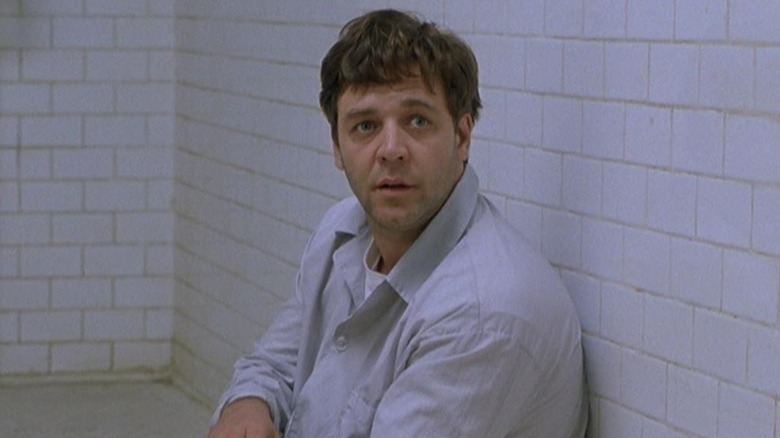
The film eventually sees Nash accepting and overcoming his schizophrenia, following his diagnosis and eventual denial of the "people" that he's been interacting with. That being said, elements of Nash's recovery in the film, as harrowing as they are, were sadly correct.
Nash was sent to a psychiatric hospital where he underwent insulin coma therapy, which would lead the patient to have regularly scheduled comas following large doses. The process was eventually discredited and replaced with anti-psychotic drugs. The film also details Nash's relapse after concluding the medication is impeding his work, leading him to deteriorate and, at times, for the hallucinations to return. Lamberti agreed that the film accurately displayed medicine not being the "cure-all" conclusion. That being said, the time spent was far longer for Nash in real life, who fought the condition for decades (via Banyan Mental Health ).
Lamberti also agreed that his family eventually adapting and helping him with his condition did hold truth and is a recommended for those diagnosed. Speaking to ABC, he explained, "the importance of family support has been increasingly recognized in the field of psychiatry over the past 20 years, and new forms of family education and treatment have been developed." Overall, it seems that "A Beautiful Mind" may have applied story mechanics and twists in the timeline to tell Nash's story, but there are enough elements ensuring it was an accurate one, all the same.
A Beautiful Mind
The Nobel Prize winner John Forbes Nash Jr. still teaches at Princeton, and walks to campus every day. That these commonplace statements nearly brought tears to my eyes suggests the power of “A Beautiful Mind,” the story of a man who is one of the greatest mathematicians, and a victim of schizophrenia. Nash’s discoveries in game theory have an impact on our lives every day. He also believed for a time that Russians were sending him coded messages on the front page of the New York Times.
“A Beautiful Mind” stars Russell Crowe as Nash, and Jennifer Connelly as his wife, Alicia, who is pregnant with their child when the first symptoms of his disease become apparent. It tells the story of a man whose mind was of enormous service to humanity while at the same time betrayed him with frightening delusions. Crowe brings the character to life by sidestepping sensationalism and building with small behavioral details. He shows a man who descends into madness and then, unexpectedly, regains the ability to function in the academic world. Nash has been compared to Newton, Mendel and Darwin, but was also for many years just a man muttering to himself in the corner.
Director Ron Howard is able to suggest a core of goodness in Nash that inspired his wife and others to stand by him, to keep hope and, in her words in his darkest hour, “to believe that something extraordinary is possible.” The movie’s Nash begins as a quiet but cocky young man with a West Virginia accent, who gradually turns into a tortured, secretive paranoid who believes he is a spy being trailed by government agents. Crowe, who has an uncanny ability to modify his look to fit a role, always seems convincing as a man who ages 47 years during the film.
The early Nash, seen at Princeton in the late 1940s, calmly tells a scholarship winner “there is not a single seminal idea on either of your papers.” When he loses at a game of Go, he explains: “I had the first move. My play was perfect. The game is flawed.” He is aware of his impact on others (“I don’t much like people and they don’t much like me”) and recalls that his first-grade teacher said he was “born with two helpings of brain and a half-helping of heart.” It is Alicia who helps him find the heart. She is a graduate student when they meet, is attracted to his genius, is touched by his loneliness, is able to accept his idea of courtship when he informs her, “Ritual requires we proceed with a number of platonic activities before we have sex.” To the degree that he can be touched, she touches him, although often he seems trapped inside himself; Sylvia Nasar , who wrote the 1998 biography that informs Akiva Goldsman’s screenplay, begins her book by quoting Wordsworth about “a man forever voyaging through strange seas of Thought, alone.” Nash’s schizophrenia takes a literal, visual form. He believes he is being pursued by a federal agent ( Ed Harris ), and imagines himself in chase scenes that seem inspired by 1940s crime movies. He begins to find patterns where no patterns exist. One night he and Alicia stand under the sky and he asks her to name any object, and then connects stars to draw it. Romantic, but it’s not so romantic when she discovers his office thickly papered with countless bits torn from newspapers and magazines and connected by frantic lines into imaginary patterns.
The movie traces his treatment by an understanding psychiatrist ( Christopher Plummer ), and his agonizing courses of insulin shock therapy. Medication helps him improve somewhat–but only, of course, when he takes the medication. Eventually newer drugs are more effective, and he begins a tentative re-entry into the academic world at Princeton.
The movie fascinated me about the life of this man, and I sought more information, finding that for many years he was a recluse, wandering the campus, talking to no one, drinking coffee, smoking cigarettes, paging through piles of newspapers and magazines. And then one day he paid a quite ordinary compliment to a colleague about his daughter, and it was noticed that Nash seemed better.
There is a remarkable scene in the movie when a representative for the Nobel committee ( Austin Pendleton ) comes visiting, and hints that he is being “considered” for the prize. Nash observes that people are usually informed they have won, not that they are being considered: “You came here to find out if I am crazy and would screw everything up if I won.” He did win, and did not screw everything up.
The movies have a way of pushing mental illness into corners. It is grotesque, sensational, cute, funny, willful, tragic or perverse. Here it is simply a disease, which renders life almost but not quite impossible for Nash and his wife, before he becomes one of the lucky ones to pull out of the downward spiral.
When he won the Nobel, Nash was asked to write about his life, and he was honest enough to say his recovery is “not entirely a matter of joy.” He observes: “Without his ‘madness,’ Zarathustra would necessarily have been only another of the millions or billions of human individuals who have lived and then been forgotten.” Without his madness, would Nash have also lived and then been forgotten? Did his ability to penetrate the most difficult reaches of mathematical thought somehow come with a price attached? The movie does not know and cannot say.
(Note: For Nash’s autobiographical statement, go to www.nobel.se/economics/laureates/1994/nash-autobio.html)

Roger Ebert
Roger Ebert was the film critic of the Chicago Sun-Times from 1967 until his death in 2013. In 1975, he won the Pulitzer Prize for distinguished criticism.
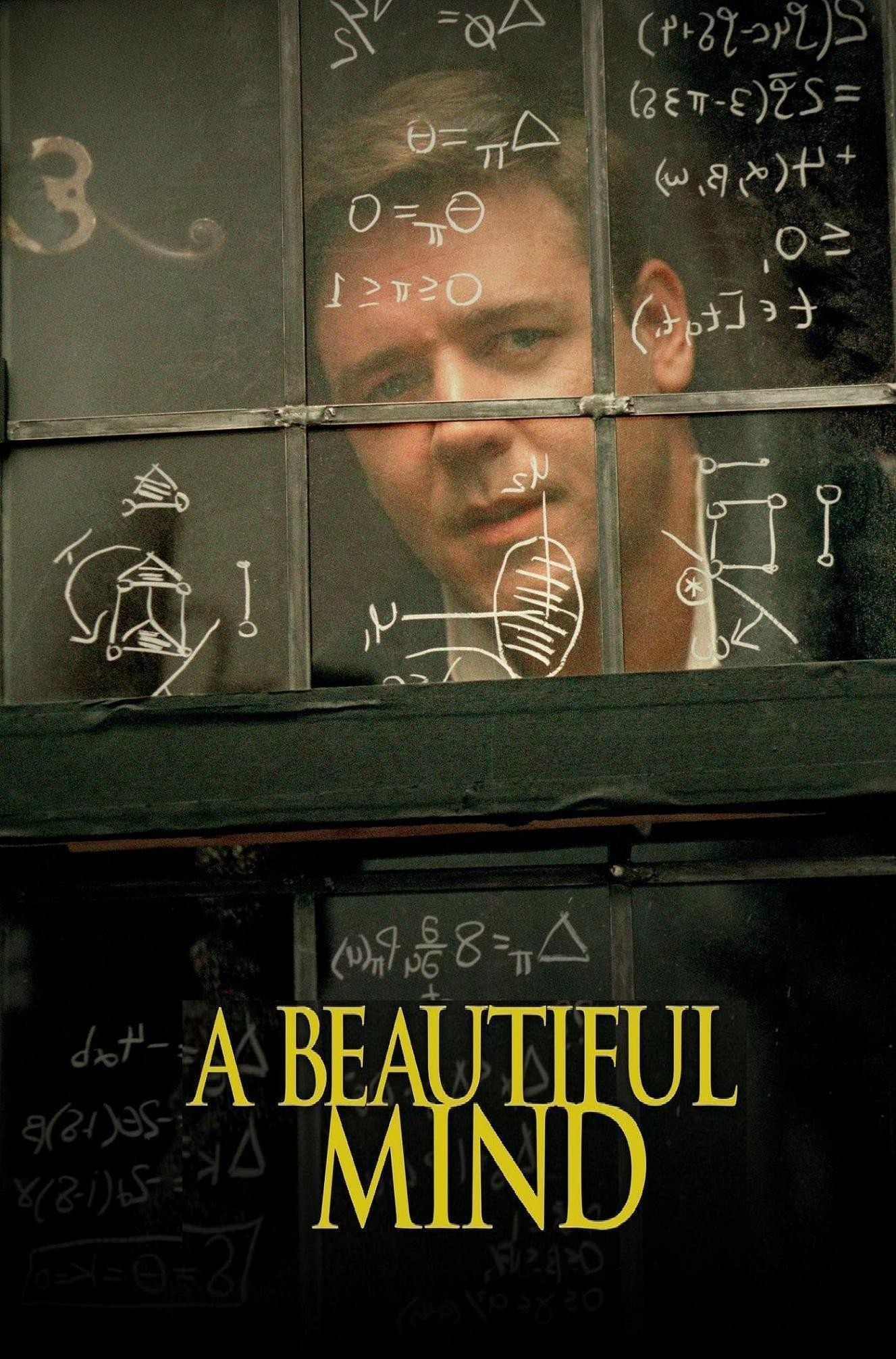
- Judd Hirsch as Helinger
- Paul Bettany as Charles
- Jennifer Connelly as Alicia
- Russell Crowe as John Nash
- Ed Harris as Parcher
- Christopher Plummer as Dr. Rosen
Directed by
Based on the book by.
- Sylvia Nasar
Leave a comment
Now playing.

The Front Room
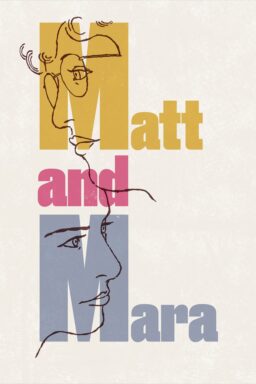
Matt and Mara

The Thicket

The Mother of All Lies

The Paragon

My First Film
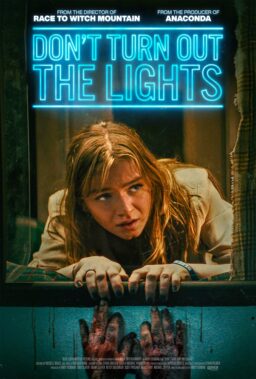
Don’t Turn Out the Lights

I’ll Be Right There

The Greatest of All Time

The Substance

His Three Daughters
Latest articles.

Wrapping Up My Experiences at the 2024 Telluride Film Festival

Peacock’s “Fight Night” Largely Entertains But Pulls A Few Punches
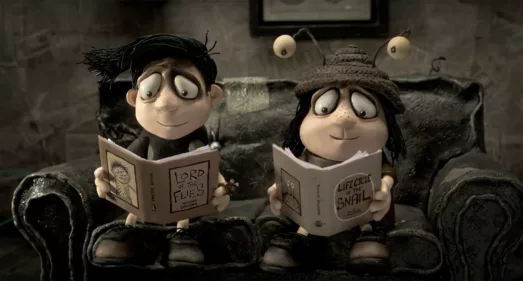
Telluride Film Festival 2024: Memoir of a Snail, Better Man, The White House Effect

Telluride Film Festival 2024: Blink, Apocalypse in the Tropics, Carville: Winning is Everything, Stupid!
The best movie reviews, in your inbox.
We Have Beds Available! Call for Same Day Admission. 877-360-1639
We Have Beds Available! Call for Same Day Admission.
877-360-1639
- Anxiety and Addiction
- Bipolar Disorder and Addiction Treatment
- Addiction and OCD Treatment
- PTSD and Addiction Treatment
- Schizophrenia and Addiction
- Bipolar Disorder
- Schizophrenia
- Substance-Induced Disorder
- Thought Disorders
- PTSD Treatment
- Residential
- Partial Hospitalization
- Aftercare Programs
- Ancillary Programs
- Faith-Based Counseling
- Mental Health Care for LGBTQ
- Mental Health Disorder Diagnosis
- Telehealth for Mental Health
- Veterans Program
- Art and Music
- Biofeedback
- Cognitive Behavioral Therapy
- Dialectical Behavioral Therapy
- Equine Therapy
- Family Therapy
- Motivational Interviewing
- Pet Therapy
- Reality Therapy Program
- Solution-Focused Brief Therapy
- Drug Glossary
- Effectiveness Statistics
Verify Insurance
- Privacy Policy
Signs of High-Functioning Depression
Best movies about mental illness, how schizophrenia was portrayed in a beautiful mind, a beautiful mind is a movie based on the life of mathematician john nash and his battle with schizophrenia..
Nash developed the first symptoms of schizophrenia in the 1950s. He later made significant contributions to the field of mathematics, including the math of decision-making and the extension of game theory. His struggles with this mental disorder and its effects on his family were made into a film that has aroused questions regarding schizophrenia. As a mental health care center in Boca , we wanted to analyze how schizophrenia was portrayed in A Beautiful Mind .
What Is Schizophrenia?
Schizophrenia is a chronic mental disorder that affects a person’s thoughts, feelings, and behaviors. This disorder also causes people to feel out of touch with reality. While there are multiple symptoms linked to schizophrenia, the most common include hallucinations, delusions, and difficulties concentrating.
Schizophrenia is a chronic and severe mental illness that can have a detrimental impact on anyone’s life. Without proper care, an individual can lose their life to this disorder. At Banyan Mental Health, we offer schizophrenia treatment that’s led by a team of professionals dedicated to helping patients with this mental disorder.
What Are The Symptoms Of Schizophrenia In A Beautiful Mind
There are several examples of negative symptoms of schizophrenia in A Beautiful Mind , including:
- Delusions of grandeur
- Reduced daily activities
- Neglected hygiene
- Withdrawing from others
- Hallucinations
- Incoherent speech
- Fear of persecution
- Lack of interpersonal relationships
If you or someone you know begins to portray these signs of schizophrenia , we offer different kinds of mental illness treatment in Boca that can help.
What A Beautiful Mind Got Right About Schizophrenia
Many individuals with schizophrenia hear voices or see things that aren’t there and may even seem disconnected from reality or caught up in a different world. While A Beautiful Mind is not an entirely accurate depiction of John Nash’s life, it does offer an accurate representation of schizophrenia.
Delusions of Grandeur
Delusions of grandeur, or grandiose delusions, are among the most common signs of paranoid schizophrenia. This is when a person has an exaggerated sense of significance, personality, authority, or knowledge. In other words, a person displaying this symptom may think and act as if they’re superior to others in different ways. An example of this in A Beautiful Mind is when John offends his other classmates by calling their work “unoriginal,” and claiming that he’ll make something original.
Onset of Symptoms
Although John didn’t begin to show signs of schizophrenia until he was in his 30s, the movie portrayed his symptoms manifesting in his 20s. While this doesn’t accurately depict the course of John’s life, the 20s are the most common period during which schizophrenia reveals itself.
Lack of Emotion
Another common sign of schizophrenia is a change in how a person speaks. In many scenes, including the one where John tells Charles that he “doesn’t like people much,” he shows very little emotion when he speaks. This is frequently portrayed throughout the movie.
Impact of this Disease on a Person’s Life
People with schizophrenia have trouble differentiating fiction from reality, which is accurately portrayed in a scene where John gives a speech about his current research. During this scene, John sees men in suits and believes them to be soviet spies who have been ordered to capture him. Instead, they are really men sent to take him to a psychiatric hospital. John’s delusions advance, causing him to believe that he’s actually working for the Department of Defense under an agent named William Parcher. Eventually, his wife was able to prove to him that none of his letters to the agent were ever opened and that William Parcher never existed.
What A Beautiful Mind Got Wrong About Schizophrenia
While there were plenty of accurately portrayed characteristics of schizophrenia, there were also some that were exaggerated or inaccurate.
There Is No Quick Fix for Schizophrenia
In the movie, it appeared that John only spent a short time in the hospital, receiving treatment and taking the appropriate medication before jumping back into his research; however, this is highly inaccurate. Schizophrenia is a life-long disease that requires consistent therapy and treatment to help the individual adjust and cope with this mental disorder. John Nash himself actually struggled for decades with his mental illness and was unable to work for a long period of time.
While delusions are common side effects of schizophrenia, not all schizophrenics see delusions. Regarding John Nash specifically, he didn’t see delusions like Charles or the soviet spies as they were depicted in the movie, but rather he heard them. Oftentimes, auditory hallucinations – hearing things that aren’t real – can cause delusions. While it can occur, the soviet spies and Nash’s friend Charles can be considered exaggerated symptoms of schizophrenia. These characters help the audience visualize what John was thinking.
Many people have looked into how schizophrenia was portrayed in A Beautiful Mind . Overall, the movie can safely be considered an interesting depiction of a debilitating mental illness that affects the lives of many. If you or someone you know is currently struggling with this mental disorder, call Banyan today at 888-280-4763 for more information about our residential mental health program in Boca .
Related Readings:
The Stages of Post-Traumatic Stress Disorder
Anhedonia and Depression
Top 10 Panic Attack Triggers
Related posts
The truth behind vincent van gogh’s mental illness, schizophrenia: men vs. women, high-functioning schizophrenia symptoms, we can help., we have beds available. call for same day admission..

Mind Yourself

A Beautiful Mind: A Psychological Review
Ron howard's incredibly successful film handles schizophrenia with a gentle touch..

A Beautiful Mind is a 2001 American biographical drama film that chronicles the life of John Nash, a brilliant mathematician who struggles with schizophrenia. The film won four Academy Awards, including Best Picture, Best Director for Ron Howard, Best Adapted Screenplay for Akiva Goldsman, and Best Supporting Actress for Jennifer Connelly.
John Nash, the brilliant mathematician at the heart of the movies was marked by exceptional intelligence from a young age. However, this remarkable intellect coexisted with signs of social awkwardness and emotional detachment.
During his school days a teacher said to him, "You were born with two helpings of brain but only a half a one of heart," this very aptly summarized Nash's complex nature, foreshadowing the lifelong struggle he would face in balancing his intellectual gifts with his mental health issues.
The Path to Brilliance and the Descent into Schizophrenia
Nash's journey from brilliant student to Nobel Prize-winning mathematician was punctuated by the onset of schizophrenia. While his academic pursuits flourished at Princeton University, his personal life became increasingly chaotic.
He neglected personal hygiene, struggled to maintain relationships, and exhibited an intense focus on his mathematical work. His apathy towards people, colleagues, and his diminished emotional expressions were early indicators of his deteriorating mental health.
He also suffered hallucinations and delusions and along with diminished emotional expression these are three of the five characteristics required for a diagnosis of schizophrenia. The other two being disorganized speech and catatonic behavior, things he also displayed occasionally in the film.
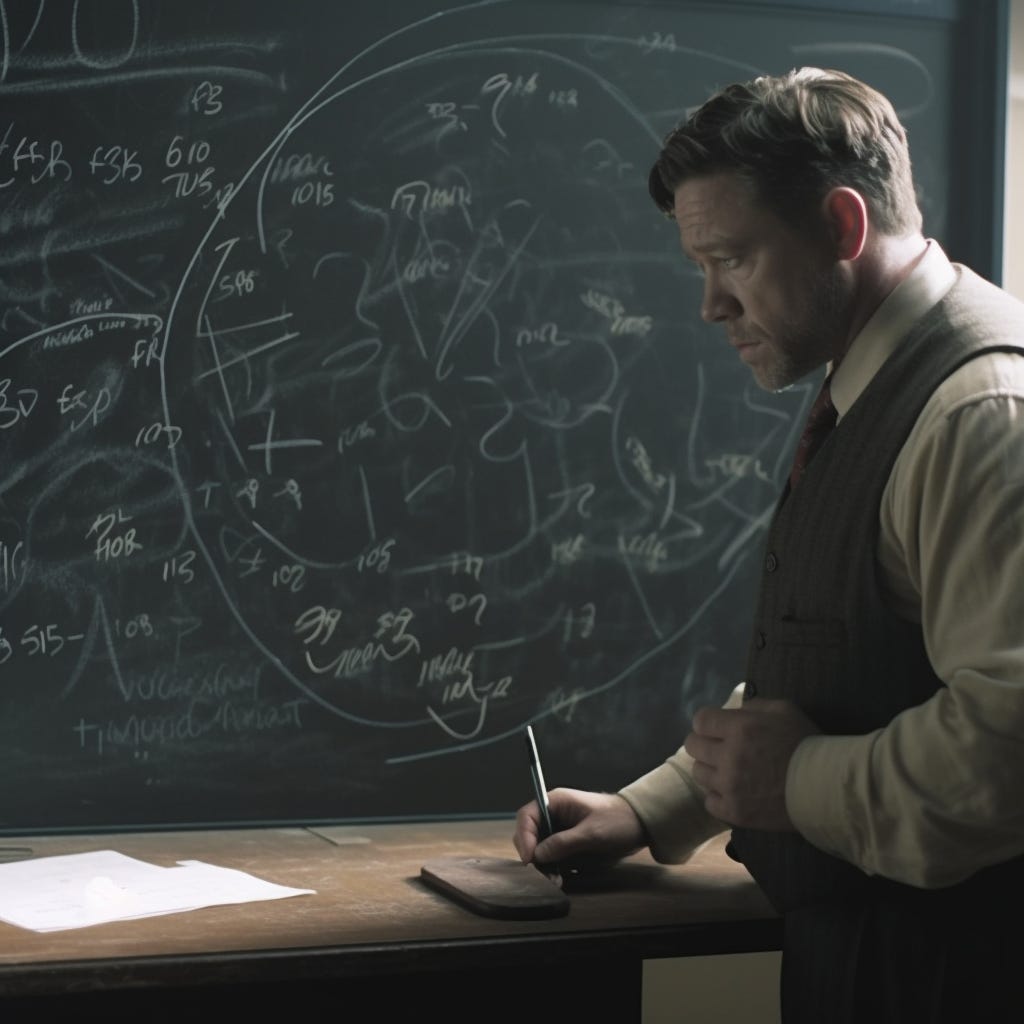
The Cold War Crucible: A Potential Trigger for Schizophrenia
The film suggests that two elements may have triggered Nash's schizophrenia. These were him attending university and the background of the Cold War.
Things start to go badly for Nash’s mental health when he starts his studies and thanks to his mathematical skills he’s soon ‘recruited’ by the Department of Defence to break Russian codes.
Hallucinations and Delusions: Navigating a Distorted Reality
Nash's schizophrenia manifested in the form of vivid hallucinations and elaborate delusions. He has a nonexistent roommate named Charles who he bickers with but also confides in too. There’s also Charles’ niece Marcee who plays an interesting role in that she asks him tough questions about his life and doesn’t really take any guff from him.
Finally, there’s William Parcher, a character he believes to be a military intelligence officer, and his superior when he is recruited to help the US in its codebreaking operations against Russia.
These recurring figures represented different aspects of Nash's internal conflict, reflecting his fears, insecurities, and desires.
His primary delusion centers on the aforementioned belief that he was a secret agent for the Department of Defense, entrusted with deciphering coded messages in newspapers and magazines to prevent a Soviet attack.
This delusion provided Nash with a sense of purpose and importance, compensating for his feelings of isolation and alienation. It also put in him great mental strife as he imagines he’s hunted and attacked by foes.
A Journey of Resilience and Triumph
Amidst the challenges of schizophrenia, Nash found love and support in his wife, Alicia. Her unwavering devotion and understanding played a crucial role in helping him manage his illness and pursue his academic career.
This devotion is tested though, particularly in a scene where Nash gets into a fight with Charles. Alicia cowers in the bathroom holding their newborn baby and when Nash enters he begins blabbering that he’s the only one that can see Charles because he’s been injected with a cloating serum where only Nash can see him. Alicia cries ‘there’s nobody here, there’s nobody here’.
Despite the debilitating effects of his condition, Nash managed to achieve extraordinary success, earning a Nobel Prize in Economics for his contributions to game theory.

Introducing Society to Schizophrenia
A Beautiful Mind has been widely praised for its sensitive and nuanced portrayal of schizophrenia. The film avoids sensationalizing the condition, instead focusing on the human cost of mental illness and the challenges faced by those living with schizophrenia and their loved ones. It has raised awareness of the disorder and sparked important conversations about the stigma associated with mental health.
The movie is not merely a story about schizophrenia though; it is a testament to the resilience of the human spirit. It is a reminder that even in the face of seemingly insurmountable challenges, individuals can find strength, love, and purpose.
Nash's story teaches us that with determination and support, even those battling debilitating mental illnesses can achieve remarkable success and contribute meaningfully to society.
The film's enduring impact lies in its ability to humanize mental illness, showing that individuals with schizophrenia are not defined by their condition but by their courage, perseverance, and humanity.
Hi, I’m Paddy. Thanks for reading my article. I’m a counselor, coach and meditation teacher.
If you’d like to contact me regarding a counseling session or about writing, you can contact me here . My different social media channels are here .
Ready for more?
- LAW & CRIME
- PUBLIC SAFETY
- ENTERTAINMENT
- ALL STORIES

Movie Critique: Analyzing “A Beautiful Mind” Through A Psychological Lens
When John Nash is first introduced in A Beautiful Mind , he appears to stare off into space, speaks in a monotone voice, and talks to very few people. To the average viewer, this may seem harmless, but to someone viewing the film with a psychological perspective, all of these could point to schizophrenia.
The National Institute on Mental Health (NIMH) defines schizophrenia as a “chronic and severe mental disorder that affects how a person thinks, feels, and behaves” (“Schizophrenia”). In the film A Beautiful Mind , protagonist John Nash experiences this disorder and its effects firsthand.
The movie portrays Nash at several points throughout his life, from his days in college to a point late in his career. Nash’s symptoms of schizophrenia pose daunting challenges to him in his family and career, but audiences do not fully learn the extent of these challenges until about halfway through the film.
Ultimately, the film does a great job of portraying life through Nash’s perspective, which makes the revelation that Nash has schizophrenia all the more powerful.
The film begins with a college-aged Nash, who is working on a project that will help him advance in his career. He has a strong bond with his roommate Charles, but does not have any other close relationships.
After college, Nash begins working on mathematical research at MIT while also teaching a class there. It is there that he meets Alicia, a student in his class who would later become his wife and strongest supporter.
Around this time, he also begins working secretly with Parcher, who works with the Department of Defense and assigns him projects to crack Russian codes embedded in newspapers. Nash is told that he cannot discuss this top-secret work with anyone, so he keeps it a secret from his wife.
Eventually, it is revealed by Nash’s psychiatrist that Charles, Parcher, and the secret DoD assignments were not real and were only in Nash’s mind. From this point on, the film portrays Nash’s struggles with schizophrenia as they affect his professional and personal life.
As someone who has never seen another portrayal of schizophrenia in popular media, I felt that the movie gave a great overview of the disorder while focusing on Nash’s specific case. Many of the symptoms outlined in the text Abnormal Psychology in a Changing World , as well as in other sources, are seen in the film.
The text states that schizophrenia “touches every facet of the affected person’s life” (Nevid 404) and causes those with the disorder to “become increasingly disengaged from society” (Nevid 404). This is definitely the case with John Nash, as his symptoms are expressed across different parts of his life and become more severe as he grows older.
According to the text, schizophrenia “typically develops during late adolescence or early adulthood” (405). This timeline is appropriate when discussing Nash’s case. When we first meet Nash, he is enrolled in college and is developing a bond with his fictional roommate Charles. Though it is unclear whether Nash had shown symptoms prior to this, Charles’ existence is indicative of one major symptom of schizophrenia that would afflict Nash for the majority of his life.
The National Alliance on Mental Illness (NAMI) defines hallucination as “a person hearing voices, seeing things, or smelling things others can’t perceive” (“What is Schizophrenia?”). In Nash’s case, Charles and other characters in the film are vivid, influential hallucinations that last for long periods of time.
While Charles was heavily present during Nash’s college days, Parcher became a prominent hallucination when Nash began working at MIT. Parcher, who claimed to work for the DoD, assigned Nash to work privately on breaking Russian secret codes hidden in American newspapers or magazines.
During his “work” with Parcher, Nash is involved in a car chase and shootout. He then expresses to Parcher that he does not want to continue with his work, and Parcher tells him he needs to keep working unless he wants the Russians to know his identity.
This makes sense, as the NAMI also expresses that “the voices in the hallucination can be critical or threatening” (“What is Schizophrenia?”). In this case, Parcher is threatening Nash to continue his work or suffer the consequences of Russians coming after him.
Another symptom experienced by Nash, disorganized thinking, is defined by the NAMI as a “struggle to remember things, organize their thoughts or complete tasks” (“What is Schizophrenia?”). This is seen on a regular but minor basis when Nash is in college, as he repeatedly has trouble coming up with a topic for his school research project. However, the more prominent example of disorganized thinking that Nash experiences comes when he is giving a guest lecture at Princeton years after his graduation.
During the lecture, he has trouble making coherent statements and instead trails off mid-sentence. His hallucinations make this worse; when he sees a group of men standing in the back of the room, he feels like they are Russians and are coming after him. He runs out of the lecture hall and across the campus, until he is intercepted by the psychiatrist, who Nash also assumes to be a Russian spy.
After being brought to the treatment facility by the psychiatrist Dr. Rosen, Nash experiences another symptom of schizophrenia: delusions. The NAMI explains that delusions are “false beliefs that don’t change even when the person who holds them is presented with new ideas or facts” (“What is Schizophrenia?”).
Despite being presented with facts about his diagnosis by Dr. Rosen and Alicia, Nash was resistant and reluctant to accept this reality.
Even though he had been enrolled in treatment and been told by Alicia that his hallucinations were not real, Nash still believed that he was being held prisoner by the Russians. He also rationalized his belief in Parcher’s existence, despite Alicia telling him there is no record of anyone by that name working for the DoD, by saying that he would not be listed in any records because he is a secret operative.
Worst of all, he cut open his arm to find the tracking device he believed Parcher implanted in him; when it was not there, he reasoned that someone had removed it, instead of realizing it was never there in the first place.
Before his diagnosis, Nash appeared to have it all together; after all, he appeared to be working for the DoD and was described by Parcher as “the best code breaker [he has] ever seen.” However, after being diagnosed with schizophrenia, the troubles being faced by Nash became much clearer to him, Alicia, and viewers.
The text explains that people with schizophrenia often “fail to function in the expected roles of student, worker, or spouse, and their families and communities grow intolerant of their deviant behavior” (Nevid 404). Once again, this description applies to Nash’s case.
Alicia, who was Nash’s primary caretaker after his release from treatment, reported to a friend that she felt “obligation or guilt over wanting to leave [John]” as well as “rage against John [and] against god.” She was clearly overwhelmed by the responsibility of caring for her husband.
These emotions reached a boiling point when Nash tried to give their son a bath. Alicia had stepped out for a moment, and when she returned, the baby was nearly drowning in the water. Nash was not supervising the baby because he believed that Charles was watching him. Alicia then tried to call Dr. Rosen. Nash, at the perceived insistence of Parcher, then pushed her to the ground and away from the phone in response. During this event, Nash’s hallucinations got in the way of his ability to behave appropriately with his son and wife.
When Nash returned to work, he also experienced difficulties typical of people with schizophrenia. Unfortunately, shortly after his return, he became panicked at the sight of Parcher and ran all over campus to get away from him.
Thankfully, he was still allowed to keep his job after this. After this, when he saw his hallucinations, he did his best to avoid them, and even told Charles and Marci that he should not be talking to them anymore. Nash’s symptoms got in the way of his work at first, but fortunately they became gradually less debilitating as his career progressed.
In the end, Nash was able to succeed in his life despite experiencing hallucinations for the majority of his life. He went on to have a long career as a professor at Princeton, and even won a Nobel Prize. His marriage also persevered through the struggles he and Alicia experienced. This film sends hope to people with schizophrenia that it is possible to overcome the challenges the disorder poses in order to achieve their goals.
- Nevid, J. S., Rathus, S. A., & Greene, B. (2014). Abnormal Psychology in a Changing World (9th ed.). Hoboken, NJ: Pearson Higher Education.
- Schizophrenia. (n.d.). Retrieved April 20, 2018, from https://www.nimh.nih.gov/health/topics/schizophrenia/index.shtml
- What is Schizophrenia? (n.d.). Retrieved April 20, 2018, from https://www.nami.org/learn-more/mental-health-conditions/schizophrenia
RELATED ARTICLES MORE FROM AUTHOR

Florida man laid off by Disney starts making handcrafted flags in garage

7 Strange Details About Taylor Swift And Karlie Kloss’ Friendship, Including Whether Or Not They’re Still Friends

Sad New Details About The Murder Of Playboy Model Christina Kraft


New Details About Why Emmy Rossum Is Leaving “Shameless”

New Details About Why Emmy Rossum Is Leaving “Shameless” (REPUBLISHED ON YAHOO)

A Hollywood Picture of Schizophrenia in A Beautiful Mind
Mental health has been an issue addressed in some of the most well known and most respected films in the history of cinema. I would bet, even as you are reading this, you’ve already had a couple of titles pop into your head. Some of these films address the issue more honestly than others. I will be looking specifically at the 2001 film A Beautiful Mind and examining why I feel the film, although a beautiful example of Hollywood magic and vehicle for much needed and much deserved attention to mental health, does a disservice to those who live with serious mental health conditions such as paranoid schizophrenia.
I recently re-watched A Beautiful Mind for the first time since it first premiered in 2001 and I went into it already planning on still hating it. In fact, I was dead set on not liking it before I even hit play. So you can imagine my intense ire when I found myself liking this film…a lot. After re-watching the film I was a mess. I was crying, I was laughing, heck I even stood up and clapped a few times. I was now convinced I had been wrong the entire time. A Beautiful Mind is a wonderful movie, I said to myself through my happy tears. Ron Howard hit every note perfectly. Akiva Goldsman’s adapted screenplay, it appeared, stayed true to Sylvia Nasar’s book of the same name, as Nasar has said the filmmakers “invented a narrative, that while far from a literal telling it stayed true to Nash’s spirit”. Russell Crowe and Jennifer Connelly delivered pitch-perfect performances with an amazing supporting cast that lists like a who’s who in Hollywood. People such as Judd Hirsch, Anthony Rapp, Christopher Plummer, Ed Harris, Adam Goldberg, and Josh Lucas. Even John Nash himself made a surprise appearance towards the end of the film.
A Beautiful Mind , as far as films go, deserved every single award it earned. A Beautiful Mind , simply put, is a beautiful film. A beautiful film that glosses over and omits significant and, I feel, imperative facts.
After I had time to let the magic of Hollywood’s spell wear off it is the omissions of truths leading to the atypical manner in which they portrayed paranoid schizophrenia that began to disturb me most about this film. In the name of full disclosure I feel it is important to state that since I saw the film the eldest of my 2 paranoid schizophrenic brothers committed suicide and I spent over 10 of those 18 years since I first saw the film as a mental health professional, as I am sure this affects my views on many, many levels.
Now, as Nasar stated, the movie stayed true to the spirit of John Nash…the spirit, but not the facts. So let’s get some facts on schizophrenia. According to NAMI Iowa schizophrenia; 1) is a disease of the brain which affects a person’s ability to think, feel, and relate to the environment 2) affects 1.5 per cent of the general population. It is twice as common as Alzheimer disease, five times more common than MS, and 60 times more common Muscular Dystrophy 3) is not caused by bad parenting or a personal weakness. Rather it is a biological illness of the brain 4) is not a form of mental retardation. Mental retardation is a developmental disability present from birth that affects one’s intellectual capacity. On the other hand, schizophrenia is a mental illness typically having its onset in adolescence or early adulthood. And Ann Olsen Psy.D says in her article written for psychologytoday.com entitled Beautiful Myths and the Minds of Schizophrenics, “The distribution of I.Q. scores in those who are schizophrenic are positively skewed as compared to that of those without schizophrenia. This means that there is a greater chance than the norm for schizophrenics to score as less intelligent on the distribution of the bell curve. The curve of the distribution for schizophrenics depicts a higher percentage of schizophrenics falling below normative intelligence.”

Right off the bat, we can see one of the biggest factors that make both the Hollywood version of John Nash and the real-life John Nash an atypical example of a person with schizophrenia is his immense intelligence and high I.Q. Both versions of John Nash were awarded the Nobel Memorial Prize in Economic Sciences (1994) for his “Nash Equilibrium” economic theory. However, in the film, Nash uses his Nobel Prize acceptance speech to pay tribute to his wife Alicia. When, in reality, Nash was not asked to give a Nobel lecture. He did, however, give a short speech at a small party in Princeton. Nasar’s synopsis from her book rang true to me because when I asked my youngest brother with schizophrenia to be a groomsman in my wedding he said he would be uncomfortable standing in front of so many people. Here is what Nasar had to say in her book:
“He was not inclined to give speeches, he said, but he had three things to say. First, he hoped that getting the Nobel would improve his credit rating because he really wanted a credit card. Second, he said that one is supposed to say that one is glad he is sharing the prize, but he wished he had won the whole thing because he really needed the money badly. Third, Nash said that he had won for game theory and that he felt that game theory was like string theory, a subject of great intrinsic intellectual interest that the world wishes to imagine can be of some utility. He said it with enough skepticism in his voice to make it funny.”
Another very much glossed over part of Nash’s life in the movie is his marriage to Alicia. In the movie, Nash uses his Nobel Prize acceptance speech to pay tribute to Alicia but as we just learned he did not give the speech presented in A Beautiful Mind . The real-life version of John Nash and Alicia Larde were married in February 1957 and their son, John Charles Martin Nash, was born May 20, 1959. According to Nasar, on the day after Christmas in 1962, Alicia filed for divorce. Her papers stated that Nash blamed her for twice committing him to a mental institution. He had moved into another room and refused to have sex with her for more than two years. By 1965, she hoped to marry another math professor, John Coleman Moore. Nash moved in with Alicia again in 1970, and it’s true that her patience and concern played a critical role in his recovery from schizophrenia. But she referred to him as her “boarder,” she writes, and “they lived essentially like two distantly related individuals under one roof” until he won the Nobel Prize, then they renewed their relationship.

John Nash also fathered a son with a woman by the name of Eleanor Stier, a Boston nurse. According to Nasar, In 1953, John David Stier was born to Eleanor, Nash was 25 at the time. (Nash’s other son, who is depicted in the movie, is also named John, and who later developed schizophrenia) she says in her book “though single, Nash was unwilling to care for Eleanor or John, and John had to be placed in foster care for a time. In 1956, Eleanor was forced to hire a lawyer in order to get Nash to pay child support.”
Lastly, I would like to address Mr Nash’s refusal to take his medication and his hiding of this refusal, because although this worked for Nash in the film, in reality, this can be a quite dangerous thing to do without first consulting a physician. According to Web MD, there are several reasons a person may refuse to take their medication and it is important to understand these reasons, both for the person with the mental health and their loved ones.
“First, they may not realize that anything is wrong. Among people with schizophrenia, 50% may have anosognosia, a brain problem that makes them think they’re not ill. And if you’re not ill, why would you take medication? Secondly, they may not accept the diagnosis. Many people with schizophrenia get diagnosed when they’re young. Finding out that they have a serious mental illness can be hard to take in. Every time they take that medicine, it’s a reminder of something they don’t agree with. Thirdly, these are some of the harder psychiatric medications to take. Finding the right dosage or combination often takes time. Prescribing doctors may have to try three different brands before settling on something that works. In the meantime, your relative or partner may find the side effects tough to take. It can be a hard process to ride out. Finally, some people with schizophrenia stop taking medication when they feel better. But that can backfire. Cutting back on or stopping the medication too soon can cause your symptoms to come back. Most people with schizophrenia take what doctors call a maintenance medication to keep things stable”.

From my personal experience as both the sister of two brothers with paranoid schizophrenia—one who committed suicide while off of his prescribed medications, and one who struggles to this day with self medicating with illegal drugs and alcohol—as well as being a former mental health professional, I can say with a high degree of certainty and more facts than you would wish me to list as to why it is extremely dangerous to stop taking your psychiatric medications without the supervision of a licensed Doctor or Psychiatrist. I honestly cannot stress this enough.
Furthermore, John Nash, both the Hollywood version and the real John Nash, as we earlier learned has a much higher than average intelligence than the majority of individuals with schizophrenia which helped him to be able to rationalize his thoughts and understand his disease in a way that most people with schizophrenia, including both of my brothers, are/were able to do.
I truly thought A Beautiful Mind was a beautiful film. But it was a film. And like with any piece of art the artist changes things, rewrites things, omits things, and creates things to make it appealing to the proper audience through the proper medium which can and does make for beautiful art; beautiful art that can become dangerous when seen as anything more than beautiful art with a heavy dose of Hollywood magic.
Written by Rikki Robinson
Former staff member
Jennifer Connelly John Nash mental health Nobel Prize Russell Crowe Schizophrenia
I was so angry that Russell Crowe lost his temper at the BAFTA Awards that year, right before the Oscars, because I knew that’s all anybody in this stupid country would focus on, instead of his incredible performance, so he LOST the Oscar! And Denzel Washington who did win knew that Oscar wasn’t really his, and he acted like it. I have never been so angry at the Academy as I was that year. Russell Crowe had won every single acting award that year, but the Academy being a bunch of imbecilic morons denied him the Oscar he so richly deserved! Grow up Academy and do your job!
Really great writing.
THANK YOU!!!!
Leave a Reply Cancel reply
Film Obsessive welcomes your comments. All submissions are moderated. Replies including personal attacks, spam, and other offensive remarks will not be published. Email addresses will not be visible on published comments.
Save my name, email, and website in this browser for the next time I comment.

The Criterion Collection: Blood Simple’s Neo Noir
Trailer of the week: hereditary’s ari aster returns with midsommar.
Add to Collection
Public collection title
Private collection title
No Collections
Here you'll find all collections you've created before.
Psychiatrists Invited to Peer Inside ‘A Beautiful Mind’
Information & authors, metrics & citations, view options, information, published in.

Export Citations
If you have the appropriate software installed, you can download article citation data to the citation manager of your choice. Simply select your manager software from the list below and click Download. For more information or tips please see 'Downloading to a citation manager' in the Help menu .
| Format | |
|---|---|
| Citation style | |
| Style | |
To download the citation to this article, select your reference manager software.
There are no citations for this item
View options
Login options.
Already a subscriber? Access your subscription through your login credentials or your institution for full access to this article.
Not a subscriber?
Subscribe Now / Learn More
PsychiatryOnline subscription options offer access to the DSM-5-TR ® library, books, journals, CME, and patient resources. This all-in-one virtual library provides psychiatrists and mental health professionals with key resources for diagnosis, treatment, research, and professional development.
Need more help? PsychiatryOnline Customer Service may be reached by emailing [email protected] or by calling 800-368-5777 (in the U.S.) or 703-907-7322 (outside the U.S.).
Share article link
Copying failed.
PREVIOUS ARTICLE
Next article, request username.
Can't sign in? Forgot your username? Enter your email address below and we will send you your username
If the address matches an existing account you will receive an email with instructions to retrieve your username
Create a new account
Change password, password changed successfully.
Your password has been changed
Reset password
Can't sign in? Forgot your password?
Enter your email address below and we will send you the reset instructions
If the address matches an existing account you will receive an email with instructions to reset your password.
Your Phone has been verified
As described within the American Psychiatric Association (APA)'s Privacy Policy and Terms of Use , this website utilizes cookies, including for the purpose of offering an optimal online experience and services tailored to your preferences. Please read the entire Privacy Policy and Terms of Use. By closing this message, browsing this website, continuing the navigation, or otherwise continuing to use the APA's websites, you confirm that you understand and accept the terms of the Privacy Policy and Terms of Use, including the utilization of cookies.
A Beautiful Mind (2001)
- User Reviews
Awards | FAQ | User Ratings | External Reviews | Metacritic Reviews
- User Ratings
- External Reviews
- Metacritic Reviews
- Full Cast and Crew
- Release Dates
- Official Sites
- Company Credits
- Filming & Production
- Technical Specs
- Plot Summary
- Plot Keywords
- Parents Guide
Did You Know?
- Crazy Credits
- Alternate Versions
- Connections
- Soundtracks
Photo & Video
- Photo Gallery
- Trailers and Videos
Related Items
- External Sites
Related lists from IMDb users

Recently Viewed
A Beautiful Mind Review

22 Feb 2002
136 minutes
A Beautiful Mind
Playing the mentally ill has always been a fast-track to critical and Oscar success, and so it proved for Russell Crowe, who bagged a third successive nomination for his performance as mentally-ill maths genius John Nash in Ron Howard's glossy biopic, which won Best Picture in 2002.
Crowe's off-screen contretemps with a Bafta official apparently cost him the chance to follow up on his Gladiator gold and follow in the footsteps of Geoffrey Rush ( Shine ), Daniel Day-Lewis ( My Left Foot ) and Dustin Hoffman ( Rain Man ), but there's no denying that his crowd-pleasing performance is this movie's trump card.
Essentially it's that old chestnut, the inspirational biopic and Howard skilfully yomps us along the well-worn path of early promise (success at sums!), catastrophic downfall (going bonkers!), and a final, emotionally-charged triumph over adversity (winning the Nobel Prize!). The problem is that, even if you haven't read the book on which it's based, you're left with the niggling suspicion that this is all too neat to be anything near the whole story. As indeed turns out to be the case.
Nash's bisexuality, a child out of wedlock and a divorce are all AWOL, while the feel-good ending neatly skips over the horrible, irreparable reality of a professional and personal life effectively ruined by insanity. Of course, any biopic smoothes the edges and has to construct a story out of the messy realities of life, but here there's a sense that the manipulation borders on dishonesty.
None of which is to deny that there are very good things as well. Crowe marshals his tics with showy aplomb, Howard displays his usual facility for smoothly-engineered filmmaking, and Akiva Goldsman's (yup, he of Batman & Robin ) screenplay delivers the necessary dramatic wallop and a craftily shocking reversal.
Support is generally good, especially from Paul Bettany, last seen whooping it up as Geoffrey Chaucer in A Knight's Tale , and the movie's only Oscar-winning performance from Bettany's future missus, Jennifer Connelly, here playing the put-upon and long-suffering Mrs. Nash. But in the end, Howard's film's undoubted effectiveness conceals a disappointingly cynical heart.
Related Articles

Movies | 30 01 2020
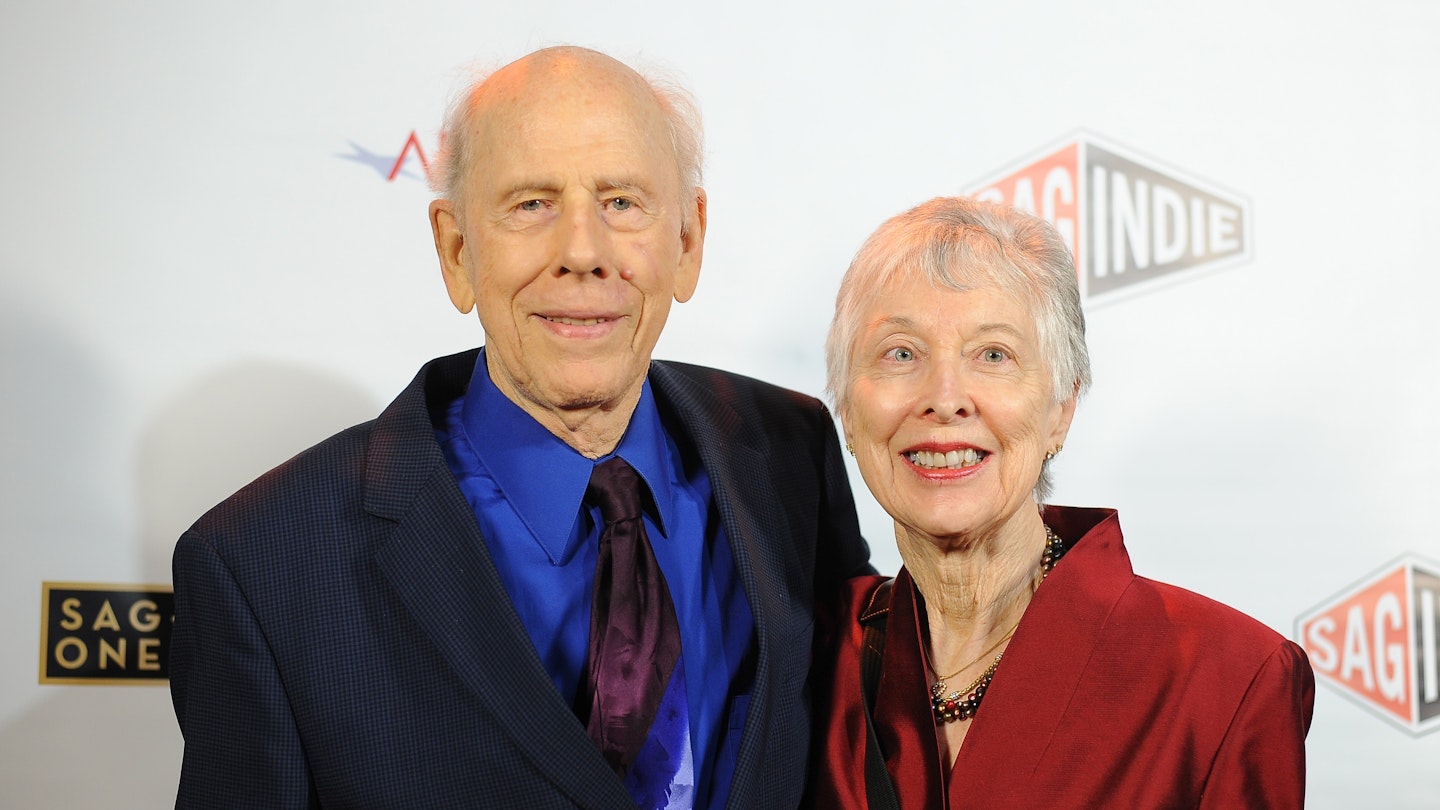
Movies | 26 11 2017

Movies | 03 09 2017

Movies | 01 09 2016
Movies | 25 08 2003
Movies | 08 07 2003
Movies | 13 03 2003
Movies | 22 11 2002

Screen Rant
A beautiful mind ending explained.

Your changes have been saved
Email is sent
Email has already been sent
Please verify your email address.
You’ve reached your account maximum for followed topics.
Russell Crowe: His 5 Best (& 5 Worst) Roles According To IMDb
Every ron howard movie ranked from worst to best, eden first images: 4 marvel stars & james bond alum lead star-studded cast in survival thriller.
- A Beautiful Mind takes historical liberties, altering major events in John Nash's life and simplifying his achievements for a more dramatic narrative.
- The movie misrepresents Nash's symptoms of schizophrenia by creating characters that were never real and altering his hallucinations.
- The ending of the movie suggests that Nash overcame his problems with his heart, but in reality, he rationalized his delusions and relied on medication. The movie's portrayal contradicts the real-life accomplishments of John Nash.
The ending of A Beautiful Mind says some problems can only be solved with the heart, showing John Nash earning the Nobel Prize despite his struggles with schizophrenia. While the historical accuracy of A Beautiful Mind is questionable on a number of levels, it was a big hit when it was released, earning five Academy Award nominations in 2002, winning four categories, including Best Picture, Best Actress for Jennifer Connelly , Best Director for Ron Howard, and Best Adapted Screenplay for Akiva Goldsman.
A Beautiful Mind tells the story of Nobel prize-winning mathematician John Nash (Russel Crowe) who gains renown for developing the Nash Equilibrium, an application of Game Theory, while at Princeton. He's eventually approached by a shady government operative, Parcher (Ed Harris), to help crack Russian codes to prevent attacks on American soil. Nash gets increasingly paranoid, believing he's being followed, but he's eventually diagnosed with schizophrenia, and none of his code-breaking has been real. Nash has to learn to overcome his schizophrenia and re-earn the respect of his fellow academics.

Oscar winner Russell Crowe is famous for his intense roles. But for every Gladiator, he has a skeleton in his movie closet that fans didn't love.
How Historically Accurate is A Beautiful Mind?

John Nash was real, but is that accurate to his life? A Beautiful Mind completely ignores some major events in John Nash's life while fabricating others. While the movie presents his marriage to Alicia as the backbone of the story, in real life Alicia and John got a divorce in 1963 after just six years of marriage. Granted, the couple still lived together and Alicia helped take care of John's mental health and the couple got remarried in 2001, the movie's portrayal of their relationship, and use of it as the driving force enabling John's recovery, takes a number of massive liberties compared to real-life history.
A Beautiful Mind also greatly simplifies much of John Nash's professional, scientific, and academic achievements to create a more dramatic linear narrative. The movie focuses on the Nash Equilibrium and Nash's contributions to Game Theory, which earned him his Nobel Prize, as the primary plot, but in reality Nash had numerous other scientific and mathematic pursuits and accomplishments. Additionally, while Nash did consult for the RAND corporation on national defense matters, he was never employed directly by the pentagon.
Finally, the presentation Nash's schizophrenia was mapaulssively altered in its on-screen portrayal. While Nash was diagnosed with schizophrenia and experienced paranoid delusions, the characters of Charles (Paul Bettany) , Marcee (Vivien Cardone), and Parcher were all completely fabricated for the plot of A Beautiful Mind . While Nash would delve into conspiratorial calculations and would often disappear for days at a time and couldn't account for where he'd been, the movie's personification of his hallucinations is a misrepresentation of his particular symptoms (and an inaccurate portrayal of schizophrenia in general).
What's the Nash Equilibrium?
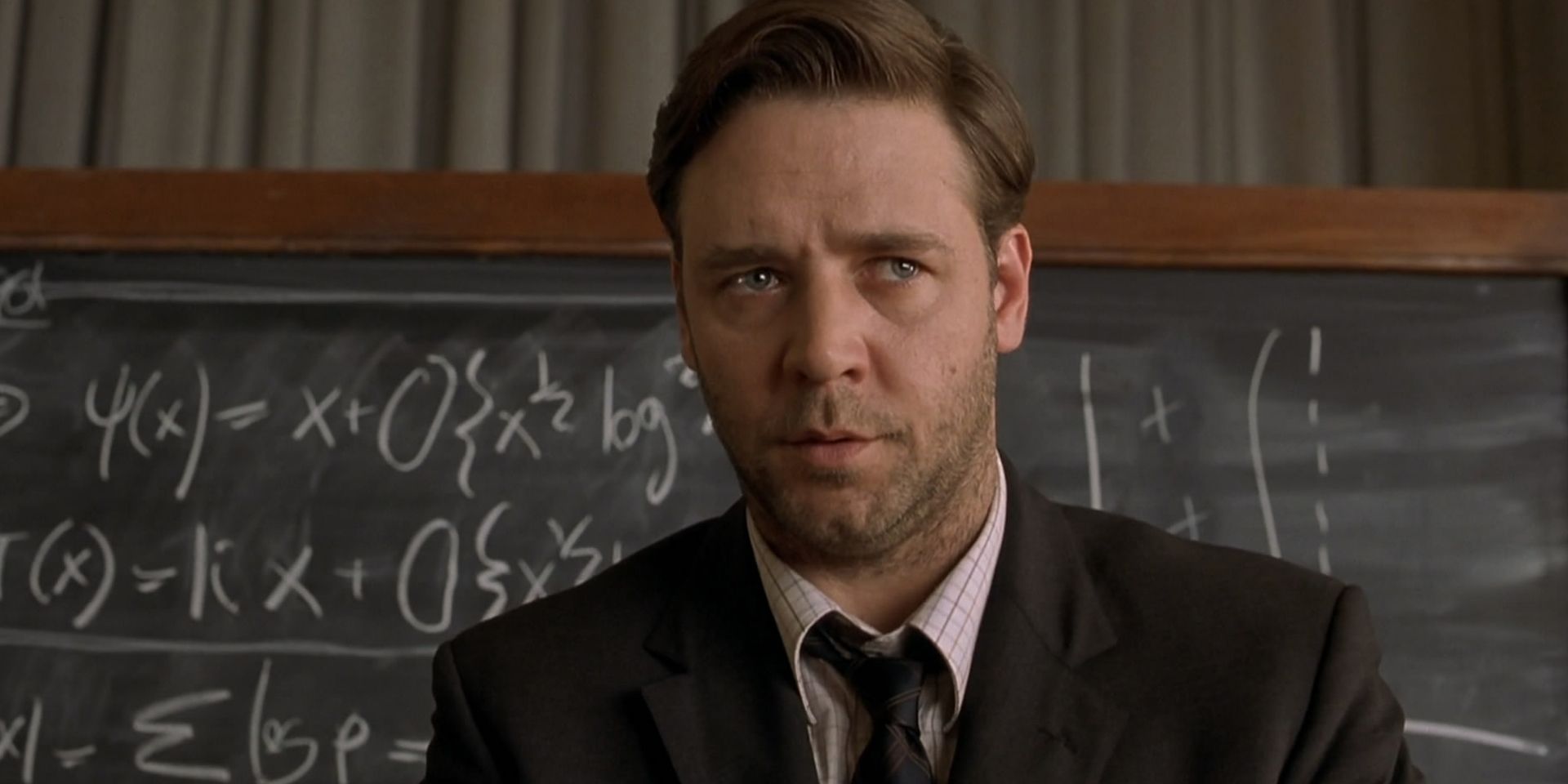
The Nash Equilibrium is John Nash's contribution to Game Theory, which, in simple terms, is the mathematical calculation of strategies employed by individual decision-makers (players) in any situation (game) where the outcome could have winners and losers. Nash's Equilibrium is when all players in a game choose the best strategy to maximize their result and no other strategy would provide a better outcome unless the other players also changed their strategy. So, while there are still winners and losers, each participant's outcome is as good as it could be in the particular scenario. As such, Nash's Equilibrium says each player's optimal strategy requires knowledge of the strategies chosen by other players.

Ron Howard has released 27 movies. Some of his films are better than others and some are downright fantastic, but how do they compare to one another?
In A Beautiful Mind , Nash's first discovery of the Nash Equilibrium is in response to Hansen citing Adam Smith "in competition, individual ambition serves the common good" when the students plan to compete for the affection of a blond woman. Subverting Adam Smith, Nash proposes that a cooperative strategy in which no one attempts to seduce the blond would serve the optimal result for each of the students. Ironically, this scenario is not an appropriate description of Nash's equilibrium, but questioning the conventionally held principle of competition espoused by Adam Smith serves as a gateway to Nash fully rendering his theory later on.
Did John Nash Really Overcome Schizophrenia Without Medication?
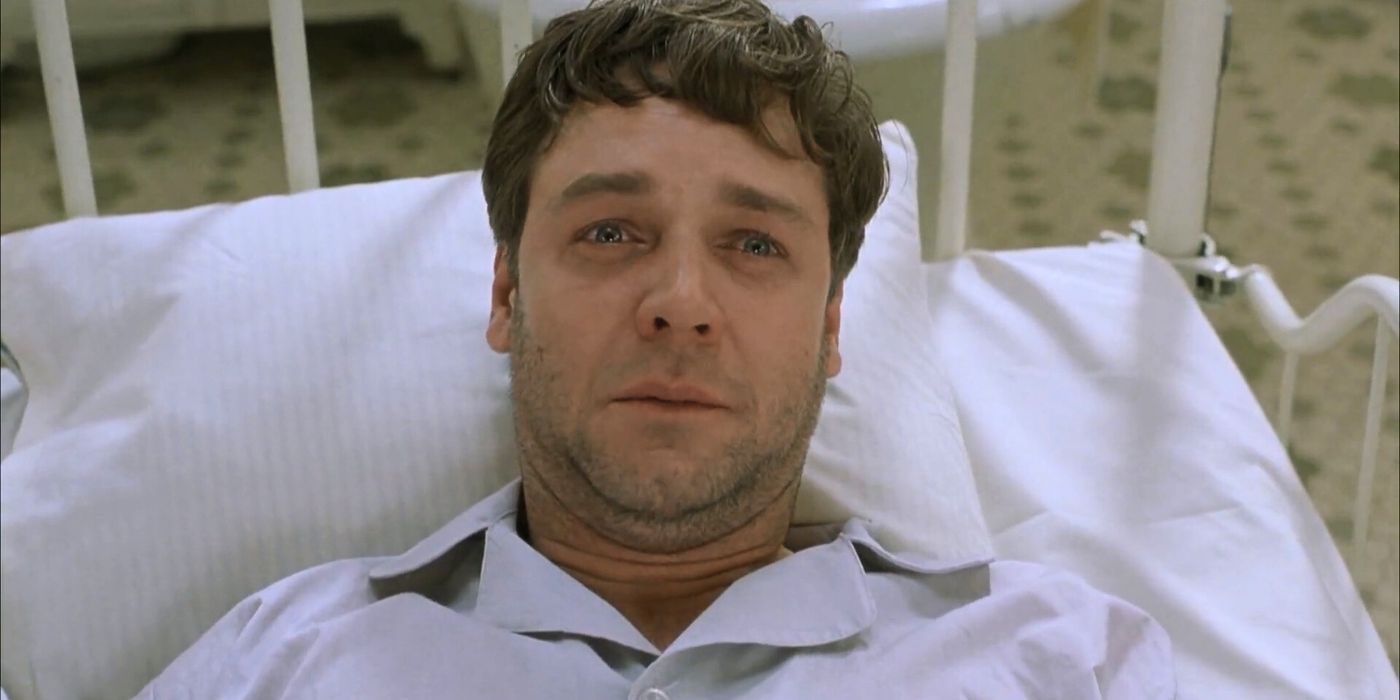
After his initial diagnosis for Schizophrenia in A Beautiful Mind , John Nash underwent Insulin Shock Therapy, a long-since discredited approach that attempted to jolt people with schizophrenia or other conditions out of their state. After that, John is on a regular dose of medication that prevents his hallucinations but dulls his mind to the point that he can't solve complex math problems in the way he used to. After he quits taking the medication, he struggles to keep his symptoms under control, although he slowly improves with time, but he later tells Thomas King from the Nobel Prize committee that he's still crazy, but takes the "newer medications."
In real life, John Nash quit taking medication to treat his schizophrenia after 1970, but director Ron Howard and screenwriter Akiva Goldsman (whose mother is a child psychologist who treated children with schizophrenia) were concerned the story would be seen as an endorsement of forgoing psychiatric medication, so they altered history in A Beautiful Mind to state Nash did, in fact, rely on medication. In his biography on nobelprize.org , Nash says he learned to "intellectually reject some of the delusionally influenced lines of thinking," which he achieved mainly through "rejection of politically-oriented thinking as essentially a hopeless waste of intellectual effort."
What do the Pens Mean?

Early in A Beautiful Mind , Helinger (Judd Hirsch) shows Nash a lounge at Princeton where a man is being presented with pens from numerous colleagues. The procedure is said to be a ceremony to recognize great scientific accomplishment, although no such ceremony or tradition actually exists at Princeton. The pen ceremony is entirely fabricated for A Beautiful Mind in order to give John Nash a motivation for recognition and a plot device to easily show his eventual acceptance and recognition by his colleagues.
While the pen ceremony itself is completely fictional, John Nash was embraced at Princeton and has been widely recognized for his intellectual achievements, both with the Nobel prize as well as others. The pen ceremony may not be historically accurate in a literal sense, but does serve as dramatic shorthand to demonstrate the respect Nash earned both for his intellectual achievements and his success in his battle with schizophrenia.
A Beautiful Mind's Ending and True Meaning Explained

Putting aside A Beautiful Mind 's historical inaccuracies and focusing purely on what happens at the end of A Beautiful Mind, the ending of the movie tells a story of a man with a genius intellect who learns to use his heart to overcome a problem he can't solve with his brain. Nash is shown feverishly creating math equations and solving puzzles throughout A Beautiful Mind , but Dr. Rosen (Christopher Plummer) tells him "you can't reason your way out of this" and Nash admits his schizophrenia is a "problem without a solution." Alicia then tells him "Maybe the part that knows the waking from the dream" isn't in his head, but his heart.
Before getting married, John told Alicia he needed "proof" or "verifiable data" to know their relationship merited a long-term commitment. The implication being that he doesn't know how to use, or trust, his heart, and can only rely on his mind, which can't comprehend something as abstract as love and emotion. Alicia telling him that maybe his heart can "tell the waking from the dream" suggests this is a problem Nash can't solve with his intellect as he does with everything else. He ultimately credits her with his success during his Nobel Prize acceptance speech as the movie's message essentially boils down to "love conquers all."
The irony is, John and Alicia were divorced, John didn't give a speech when he accepted the Nobel prize, and John himself says he rationalized his way out of his schizophrenic delusions. The ending of A Beautiful Mind honors Nash by showing his great intellectual achievement in the face of his struggle with schizophrenia, although in its dramatization it directly contradicts much of the real-life accomplishments of John Nash.
- Share full article
Advertisement
Supported by
FILM REVIEW
FILM REVIEW; From Math To Madness, And Back
By A. O. Scott
- Dec. 21, 2001
IN ''A Beautiful Mind,'' her biography of the mathematician John Forbes Nash Jr., Sylvia Nasar quotes one of his colleagues: ''All mathematicians live in two different worlds. They live in a crystalline world of perfect platonic forms. An ice palace. But they also live in the common world where things are transient, ambiguous, subject to vicissitudes.'' Mr. Nash, whose life is a case study in the difficulty -- and also the wonder -- of living in both, now inhabits a third: the treacle palace of middlebrow Hollywood moviemaking, in which ambiguity is dissolved in reassuring platitudes and freshly harvested tears.
The tears, and the dazzled glow that accompanies them, feel honestly earned. The paradox of Ron Howard's new film, from a script by Akiva Goldsman, is that the story that elicits these genuine emotions is almost entirely counterfeit.
At one point, Alicia Larde (Jennifer Connelly), the M.I.T. student who will marry Nash, breezes into his office, brandishing a proof she has devised for a fiendishly difficult hypothesis. Her professor and future husband looks up from the paper coffee cup he is chewing on and glances at her work. ''It's elegant, but wrong,'' he says, delivering a verdict that could just as well apply to ''A Beautiful Mind.''
Let's work backward, from wrong to elegant. Mr. Nash, now 73, an inordinately gifted, deeply awkward man, possesses one of the most extraordinary mathematical intellects of his generation. By his early 30's, when mental illness overwhelmed his creative powers, he had done important work in a number of fields, including game theory, quantum mechanics and number theory. After three decades of struggle with schizophrenia, he was granted what seemed like a miraculous remission. In 1994 he was awarded the Nobel Memorial Prize in economic science for work he had done as a graduate student at Princeton in the late 1940's.
In outline then Mr. Nash's life has the perfect three-act structure of a screenplay: a sparkling career derailed by adversity and redeemed by a triumph of the spirit. In detail the life, as recounted by Ms. Nasar, a former economics reporter for The New York Times, is a trove of fascinating, troubling information. In a profession whose members have a reputation for oddness, Mr. Nash was a prime number. He was notorious among his colleagues for his antisocial temperament and his predilection for cruel put-downs and dangerous practical jokes.
Before he married Alicia, with whom he had a son named John, he fathered another child, also named John, with a woman named Eleanor Stiers, and abandoned both mother and child to poverty. He formed a number of intense, apparently sexual bonds with other men, and he lost his security clearance and his position at the RAND Corporation after he was arrested for soliciting sex in a men's room in Santa Monica, Calif. When his illness became intractable and his behavior intolerable, Alicia divorced him. (They remarried last June.)
We are having trouble retrieving the article content.
Please enable JavaScript in your browser settings.
Thank you for your patience while we verify access. If you are in Reader mode please exit and log into your Times account, or subscribe for all of The Times.
Thank you for your patience while we verify access.
Already a subscriber? Log in .
Want all of The Times? Subscribe .
Academia.edu no longer supports Internet Explorer.
To browse Academia.edu and the wider internet faster and more securely, please take a few seconds to upgrade your browser .
Enter the email address you signed up with and we'll email you a reset link.
- We're Hiring!
- Help Center

A Psychoanalysis of the Schizophrenic Character in A Beautiful Mind movie

Related Papers
Desiana Kusumaningsih
Mary Panagiotakopoulou
Abstract The purpose of this film review, A Beautiful Mind is to analyze its effectiveness in providing useful and accurate information about a most debilitating mental illness, from the Schizophrenia Spectrum Disorders in DSM5(2013). Schizophrenia is characterized by impairment in the cognitive, behavioral and emotional domains of an individual experiencing the disorder. It typically emerges in late adolescence, and develops on a continuum; it is chronic and causes great impairment. Although the disorder’s etiology is not entirely known, numerous studies have suggested genetic, and neuropathological aspects influencing the disorder’s course of development. The film portrayed the real story of one of the most brilliant mathematicians, Dr. John Forbes Nash Jr. who received a Nobel Prize in economics for his Game Theory, discovered half a century prior the onset of schizophrenia. Unlike other films portraying individuals with the disorder, A Beautiful Mind exercises sensitivity and accuracy in conveying the disorder’s symptoms, course, and therapeutic options. The viewer is offered a clinical glimpse into the dark side of a genius gone mad. It depicts a man’s progressive deterioration through a course filled with both positive and negative symptoms of schizophrenia, while it touches on the human capacity to move beyond what may seem impossible. Furthermore, the film encourages new conversations regarding treatment, as it encompasses a collaborative psychosocial approach in the treatment of schizophrenia. Keywords: A Beautiful Mind, Schizophrenia, etiology, treatment, psychosis
Ashay Deshpande
Parvin Pashang
febby priscilla
Comprehensive Psychiatry
Erhabor Idemudia
Master of Science Thesis
Petar Dimkov
The thesis represents a detailed philosophical account performed as a multidisciplinary study of some of the main functions of the mind. The Freudian framework of primary and secondary thought processes embedded into his psychoanalysis and metapsychology is used as a foundation of the analysis of acute schizophrenic psychosis, psychedelic state and mystical experience. Primary process thought is primitive, irrational, illogical, preverbal, pleasure oriented. Secondary process thought is advanced, rational, logical, verbal, reality oriented. Due to the multitude of critiques against Freud an attempt is performed to grant an objective status to Freudian psychoanalysis and metapsychology via the methodology of neuropsychoanalysis. Various psychiatric, psychoanalytical, psychological and neuroscientific mechanisms are studied and applied in the analysis. Analyzed major points include: delusions, formal thought disorder, and self, cognitive, affective, perceptual and volitional disturbances. All deviations are in fact primary process manifestations, that is, disinhibitions of the id. They are due to secondary process impairments or weakening of the defense mechanisms of the ego. In the thesis, multiple parallels in terms of mechanisms of acute schizophrenic psychosis, psychedelic state and mystical experience were established. There is substantial overlapping of functional mechanisms (repression, functionality of psychic complexes and affectivity, functioning of cognition, salience attribution, thalamic filtering and gating, and psychopharmacology) leading to primary thought process manifestations when impaired and primary thought process mechanisms proper (displacement, condensation, symbolization) in all of the three states, with subtle differences observed in mystical experience. Finally, the application of those methods provides a scientific explanation of the mechanisms of mystical experience as an alternative to the classical theistic interpretations.
Loading Preview
Sorry, preview is currently unavailable. You can download the paper by clicking the button above.
- We're Hiring!
- Help Center
- Find new research papers in:
- Health Sciences
- Earth Sciences
- Cognitive Science
- Mathematics
- Computer Science
- Academia ©2024
Log in or sign up for Rotten Tomatoes
Trouble logging in?
By continuing, you agree to the Privacy Policy and the Terms and Policies , and to receive email from the Fandango Media Brands .
By creating an account, you agree to the Privacy Policy and the Terms and Policies , and to receive email from Rotten Tomatoes and to receive email from the Fandango Media Brands .
By creating an account, you agree to the Privacy Policy and the Terms and Policies , and to receive email from Rotten Tomatoes.
Email not verified
Let's keep in touch.

Sign up for the Rotten Tomatoes newsletter to get weekly updates on:
- Upcoming Movies and TV shows
- Rotten Tomatoes Podcast
- Media News + More
By clicking "Sign Me Up," you are agreeing to receive occasional emails and communications from Fandango Media (Fandango, Vudu, and Rotten Tomatoes) and consenting to Fandango's Privacy Policy and Terms and Policies . Please allow 10 business days for your account to reflect your preferences.
OK, got it!
- About Rotten Tomatoes®
- Login/signup
Movies in theaters
- Opening This Week
- Top Box Office
- Coming Soon to Theaters
- Certified Fresh Movies
Movies at Home
- Fandango at Home
- Prime Video
- Most Popular Streaming Movies
- What to Watch New
Certified fresh picks
- 77% Beetlejuice Beetlejuice Link to Beetlejuice Beetlejuice
- 98% Rebel Ridge Link to Rebel Ridge
- 95% Strange Darling Link to Strange Darling
New TV Tonight
- 100% Slow Horses: Season 4
- 97% English Teacher: Season 1
- 91% Fight Night: The Million Dollar Heist: Season 1
- 100% Wise Guy: David Chase and The Sopranos: Season 1
- 57% The Perfect Couple: Season 1
- -- Tell Me Lies: Season 2
- -- Outlast: Season 2
- -- The Secret Lives of Mormon Wives: Season 1
- -- Selling Sunset: Season 8
- -- Whose Line Is It Anyway?: Season 14
Most Popular TV on RT
- 74% Kaos: Season 1
- 83% The Lord of the Rings: The Rings of Power: Season 2
- 89% Terminator Zero: Season 1
- 100% Dark Winds: Season 2
- 59% The Perfect Couple: Season 1
- 93% Bad Monkey: Season 1
- Best TV Shows
- Most Popular TV
Certified fresh pick
- 100% Slow Horses: Season 4 Link to Slow Horses: Season 4
- All-Time Lists
- Binge Guide
- Comics on TV
- Five Favorite Films
- Video Interviews
- Weekend Box Office
- Weekly Ketchup
- What to Watch
59 Best Football Movies, Ranked by Tomatometer
Best Hulu Series To Watch Right Now (September 2024)
What to Watch: In Theaters and On Streaming
Awards Tour
The Beetlejuice Beetlejuice Cast on Reuniting with Tim Burton
New Movies and TV Shows Streaming in September 2024: What to Watch on Netflix, Prime Video, Disney+, Max and more
- Trending on RT
- Beetlejuice Beetlejuice
- Top 10 Box Office
- Venice Film Festival
- Popular Series on Netflix
A Beautiful Mind
Where to watch.
Rent A Beautiful Mind on Fandango at Home, Prime Video, Apple TV, or buy it on Fandango at Home, Prime Video, Apple TV.
What to Know
The well-acted A Beautiful Mind is both a moving love story and a revealing look at mental illness.
Critics Reviews
Audience reviews, cast & crew.
Russell Crowe
Jennifer Connelly
Alicia Nash
Paul Bettany
Adam Goldberg
Movie Clips
More like this, related movie news.
A Beautiful Mind Essay
- To find inspiration for your paper and overcome writer’s block
- As a source of information (ensure proper referencing)
- As a template for you assignment
Introduction
Directed by Ron Howard, A Beautiful Mind is an inspiring American movie, which explores the story of a successful young Mathematician, John Nash. In the story, Nash tries to find an original idea while in a graduate school where he interacts with many people most of whom he does not like.
He later gets a high profile job where he falls in love with Alicia whom he later marries. Nash begins to have a problem of paranoia and he later discovers that he is suffering from Schizophrenia. He tries to cope with his medical condition. At one point, he attempts to pluck out an implant in his arm. At another instance, he refuses to take medicine because he claims that the medicine has side effects.
This condition brings suffering in Nash’s life as he watches in pain how much his condition burdens his wife as well as his friends. The rest of the movie talks about Nash’s abilities and achievements as he tries to overcome his condition while he brings out his genius self. By using the events in Nash’s life and his condition, the movie accurately depicts schizophrenia, which will be the major subject of interest in the review of this movie.
Schizophrenia is a mind disorder in which the sufferer experiences periods of hallucinations and delusions. The movie successfully manages to create global awareness about Schizophrenia, a mental illness, which people had hitherto considered a mystery. The movie effectively underscores different issues about Schizophrenia including what happens in the sufferer’s mind by handling it as one of the major themes.
Nasar argues that the decision of Howard to showcase Nash as a sufferer of Schizophrenia who is able to overcome this mental disorder is quite admirable since besides encouraging the sufferers of this mental illness, he also overshadows the world wide myths about this condition (1998, p.78) .
The film shows how Nash suffers from his childhood, gradually learns to overcome this condition and manages to bring out his genius self as a mathematician. According to Goldsman, the hallucinations and delusions experienced by Nash as this condition plagues him from his childhood is an attempt by Psychiatrists to guide and educate people about the symptoms of this mental illness ( 2002, p.52).
Like Nash, everyone, if not most of the people suffering from Schizophrenia are bound to experience hallucinations and delusions. The violent nature of Nash that causes his wife to flee with her baby in fear of her security further shows that choleric is another symptom of Schizophrenia. There may however be small variations in the intensity these symptoms amongst the sufferers.
After undergoing insulin therapy, the Physician gives Nash antipsychotic drugs that after taking part of the dose he experiences damaging fallouts that sever emotional and sexual links with his wife. This prompts him to stop taking the drugs, which affects his intellect. By painting this picture of Nash, the director tries to create awareness about the side effects of schizophrenia medication.
On the other side, many myths exist in the public domain about this condition. One such myth asserts that schizophrenics exhibit two or more personalities. For instance, Nash assumes one personality as a sufferer of Schizophrenia and the other as a genius in mathematics who wins Nobel prizes.
A Beautiful Mind is one of the movies that have successfully endeavored to create worldwide awareness about Schizophrenia, a mental illness that causes hallucinations and delusions. The movie, through the main character manages to inform its audience that despite being in this condition, the sufferers can overcome it and live up to their expectations.
Goldman, A. (2002). A Beautiful Mind: The Shooting Script. New York: Newmarket Press. Print.
Nasar, Sylvia. (1998). A Beautiful Mind. New York: Touchstone Books. Print.
- Boring Experience of the "Tora! Tora! Tora!" Movie
- Reincarnating the "Bonnie and Clyde" Film
- A Beautiful Mind: Genius and Madness at Work
- The Movie "A Beautiful Mind" and Display of Schizophrenia
- Intelligent Agents for E-markets: Nash Equilibrium
- Feminism in Roger and Dodger Film
- The Business of Being Born
- How the Movie, “Trading Places” Has Influenced Me
- Aging in Society and Community
- Fight Club - Analysis of Consumerism
- Chicago (A-D)
- Chicago (N-B)
IvyPanda. (2018, August 22). A Beautiful Mind. https://ivypanda.com/essays/a-beautiful-mind-movie-review/
"A Beautiful Mind." IvyPanda , 22 Aug. 2018, ivypanda.com/essays/a-beautiful-mind-movie-review/.
IvyPanda . (2018) 'A Beautiful Mind'. 22 August.
IvyPanda . 2018. "A Beautiful Mind." August 22, 2018. https://ivypanda.com/essays/a-beautiful-mind-movie-review/.
1. IvyPanda . "A Beautiful Mind." August 22, 2018. https://ivypanda.com/essays/a-beautiful-mind-movie-review/.
Bibliography
IvyPanda . "A Beautiful Mind." August 22, 2018. https://ivypanda.com/essays/a-beautiful-mind-movie-review/.

IMAGES
VIDEO
COMMENTS
The 2005 film that told Nash's story, "A Beautiful Mind," sees the mathematician enroll at Princeton University in his early 20s and already showing signs of mental health issues.
A Beautiful Mind. Drama. 129 minutes ‧ PG-13 ‧ 2001. Roger Ebert. December 21, 2001. 5 min read. The Nobel Prize winner John Forbes Nash Jr. still teaches at Princeton, and walks to campus every day. That these commonplace statements nearly brought tears to my eyes suggests the power of "A Beautiful Mind," the story of a man who is one ...
A Beautiful Mind is a movie based on the life of mathematician John Nash and his battle with schizophrenia. Nash developed the first symptoms of schizophrenia in the 1950s. He later made significant contributions to the field of mathematics, including the math of decision-making and the extension of game theory.
A Beautiful Mind is a 2001 American biographical drama film that chronicles the life of John Nash, a brilliant mathematician who struggles with schizophrenia. The film won four Academy Awards, including Best Picture, Best Director for Ron Howard, Best Adapted Screenplay for Akiva Goldsman, and Best Supporting Actress for Jennifer Connelly.
The National Institute on Mental Health (NIMH) defines schizophrenia as a "chronic and severe mental disorder that affects how a person thinks, feels, and behaves" ("Schizophrenia"). In the film A Beautiful Mind, protagonist John Nash experiences this disorder and its effects firsthand. The movie portrays Nash at several points ...
In the movie, Nash uses his Nobel Prize acceptance speech to pay tribute to Alicia but as we just learned he did not give the speech presented in A Beautiful Mind. The real-life version of John Nash and Alicia Larde were married in February 1957 and their son, John Charles Martin Nash, was born May 20, 1959.
A Beautiful Mind is a powerful account of the life of Nobel Prize winner and mathematician John Nash. The movie depicts Nash's journey through life with schizophrenia. Nash displays many characteristic symptoms of schizophrenia, including hallucinations, delusions, fear of persecution, and lack of interpersonal relationships. In the beginning of the movie, Nash is an introverted, focused young ...
The discussant will be Max Fink, M.D., who was a consultant to the filmmakers and the only psychiatrist credited at the end of the movie. Fink began his residency in 1952 at New York's Hillside Hospital, a psychiatric facility that had a 22-bed insulin coma therapy unit. He headed that unit for six years. . "A Beautiful Mind," fresh from ...
Synopsis of A Beautiful Mind. A Beautiful Mind is based on the real-life story of John Forbes Nash, an American mathematician who won the 1994 Nobel Prize in economics for his contributions to the development of game theory. The movie takes place between 1947 and the 1960s, starting at Princeton University, where John Nash was a graduate ...
A BEAUTIFUL MIND (2001) Rating: 10/10. A Beautiful Mind's greatest achievement, in my humble opinion, is the way it makes schizophrenia accessible to "sane" people. The general public knows schizophrenics tend to talk to themselves, repeat certain actions and do things generally at odds with the norm.
Release Date: 21 Feb 2002. Running Time: 136 minutes. Certificate: 12. Original Title: A Beautiful Mind. Playing the mentally ill has always been a fast-track to critical and Oscar success, and so ...
Schizophrenia is a mental disorder that impairs the activities of the brain, damaging various rational functions (Andreasen, 2000). Schizophrenia is a Greek word meaning the split mind, where 'split' implies the dissociation with emotion and thought (Andreasen, 2000). The symptoms of schizophrenia can be divided into two types -positive ...
Ron Howard's Oscar-winning film, "A Beautiful Mind," is, on the surface, an easy film to peg. It is the story of John Nash (Russell Crowe), one of America's most brilliant mathematicians and also a man diagnosed with schizophrenia. Crowe's performance of Nash, who was awarded the Nobel Prize for his work on game theory, is a multi-layered ...
In A Beautiful Mind, John Nash refuses to take medication for his schizophrenia after a few nightmarish experiences.But in a scene set in 1994, he says, "I take the newer medications."This is another factual difference between A Beautiful Mind and the true story, as Sylvia Nasar's biography claims Nash stopped taking medication in 1970.. While Ron Howard has made movies that are historically ...
The ending of A Beautiful Mind says some problems can only be solved with the heart, showing John Nash earning the Nobel Prize despite his struggles with schizophrenia. While the historical accuracy of A Beautiful Mind is questionable on a number of levels, it was a big hit when it was released, earning five Academy Award nominations in 2002, winning four categories, including Best Picture ...
Of course any movie that traffics in biography must edit, foreshorten, emphasize and condense, but ''A Beautiful Mind'' goes further, becoming a piece of historical revisionism on the order of ''J ...
Abstract The purpose of this film review, A Beautiful Mind is to analyze its effectiveness in providing useful and accurate information about a most debilitating mental illness, from the Schizophrenia Spectrum Disorders in DSM5(2013). ... John Nash as the main character in this movie has a mental disorder; schizophrenia. It makes John nash has ...
It may impact the emotional state and mood expression as the person will seem apathetic or lacking interest in life. The disease has a lifetime prevalence of approximately 1% of Americans ("Schizophrenia"). The specific condition of paranoid schizophrenia is a subtype of the disease. These patients are most affected by hallucinations.
A Beautiful Mind is a 2001 American biographical drama film about the mathematician John Nash, a Nobel Laureate in Economics, played by Russell Crowe.The film is directed by Ron Howard based on a screenplay by Akiva Goldsman, who adapted the 1998 biography by Sylvia Nasar.In addition to Crowe, the film's cast features Ed Harris, Jennifer Connelly, Paul Bettany, Adam Goldberg, Judd Hirsch, Josh ...
The screenplay written by Akiva Goldsman draws on material in Sylvia Nasar's A Beautiful Mind. Ron Howard as director has fashioned a drama about the slow hatching of Nash's heart. Early on, the mathematician recalls a second grade teacher's evaluation of him as having been given two helpings of brain but only one helping of heart.
The movie titled 'A Beautiful Mind' depicts very explicitly the symptoms of schizophrenia and how it affected the life of Nash. The movie provides very real and lifelike hallucinations which support the symptoms of the diseases, however the extent to which the hallucinations are real and life like ring untrue.
Rated 4/5 Stars • Rated 4 out of 5 stars 06/28/24 Full Review Alysha S "A Beautiful Mind" represents so much of what a film should be. A remarkable story, heart, warmth, good lighting and top-of ...
A Beautiful Mind is one of the movies that have successfully endeavored to create worldwide awareness about Schizophrenia, a mental illness that causes hallucinations and delusions. The movie, through the main character manages to inform its audience that despite being in this condition, the sufferers can overcome it and live up to their ...